It’s like demise and taxes: inevitable. The larger an organization will get, the more severe its content material advertising and marketing turns into.
HubSpot instructing you learn how to sort the shrug emoji or purchase bitcoin inventory. Salesforce sharing inspiring enterprise quotes. GoDaddy serving to you employ Bing AI, or Zendesk sharing catchy gross sales slogans.
Judged by content material advertising and marketing greatest observe, these articles are unhealthy.
They gained’t resonate with decision-makers. No one will purchase a HubSpot license after Googling “learn how to purchase bitcoin inventory.” It’s the very definition of vainness visitors: tons of visits with no apparent impression on the enterprise.
So why does this occur?
There’s an apparent (however flawed) reply to this query: large firms are inefficient.
As firms develop, they turn into extra sophisticated, and writing good, related content material turns into more durable. I’ve skilled this firsthand:
- further rounds of authorized assessment and stakeholder approval creeping into processes.
- content material watered right down to serve an ever-more generic “model voice”.
- rising misalignment between search and content material groups.
- a scarcity of content material management inside the firm as early workers go away.

Equally, funded firms should develop, even once they’re already large. Content material has to feed the machine, regularly growing visitors… even when that visitors by no means contributes to the underside line.
There’s a component of reality right here, however I’ve come to assume that each these arguments are naive, and positively not the entire story.
It’s flawed to imagine that the identical people who grew the corporate all of the sudden forgot the whole lot they as soon as knew about content material, and flawed to imagine that firms willfully goal ineffective key phrases simply to sport their OKRs.
As an alternative, let’s assume that this technique is deliberate, and never oversight. I feel unhealthy content material—and the vainness visitors it generates—is definitely good for enterprise.
There are advantages to driving tons of visitors, even when that visitors by no means instantly converts. Or put in meme format:
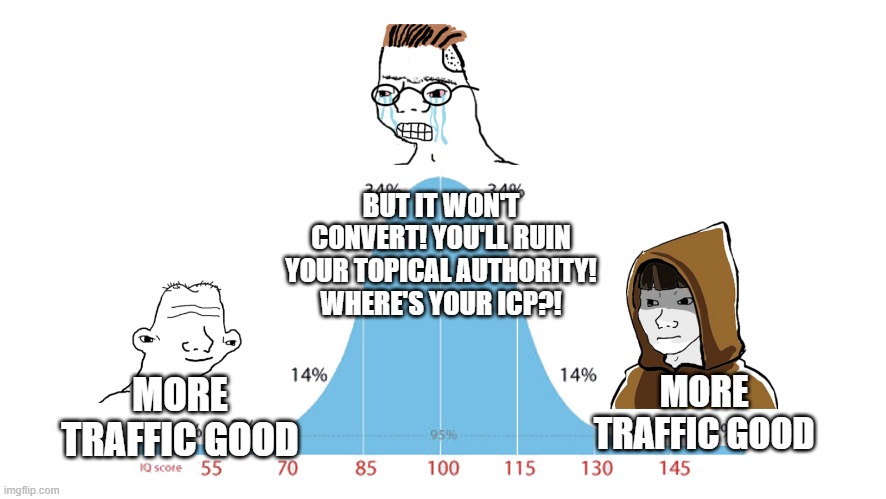
Programmatic web optimization is an effective instance. Why does Dialpad create touchdown pages for local phone numbers?
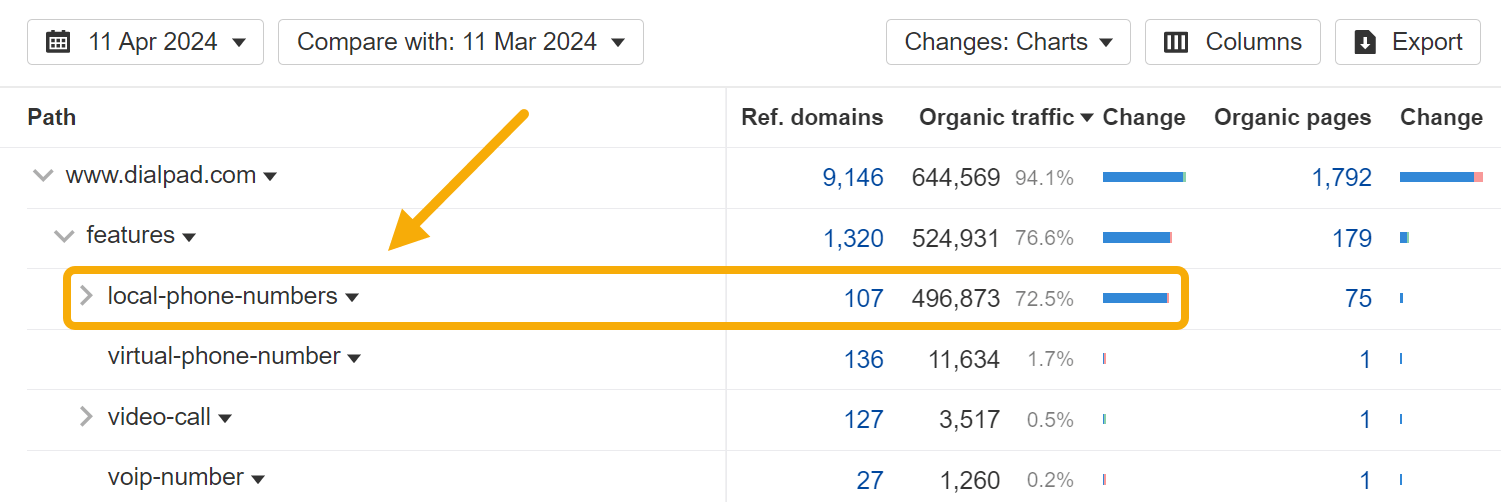
Why does Smart goal alternate charge key phrases?
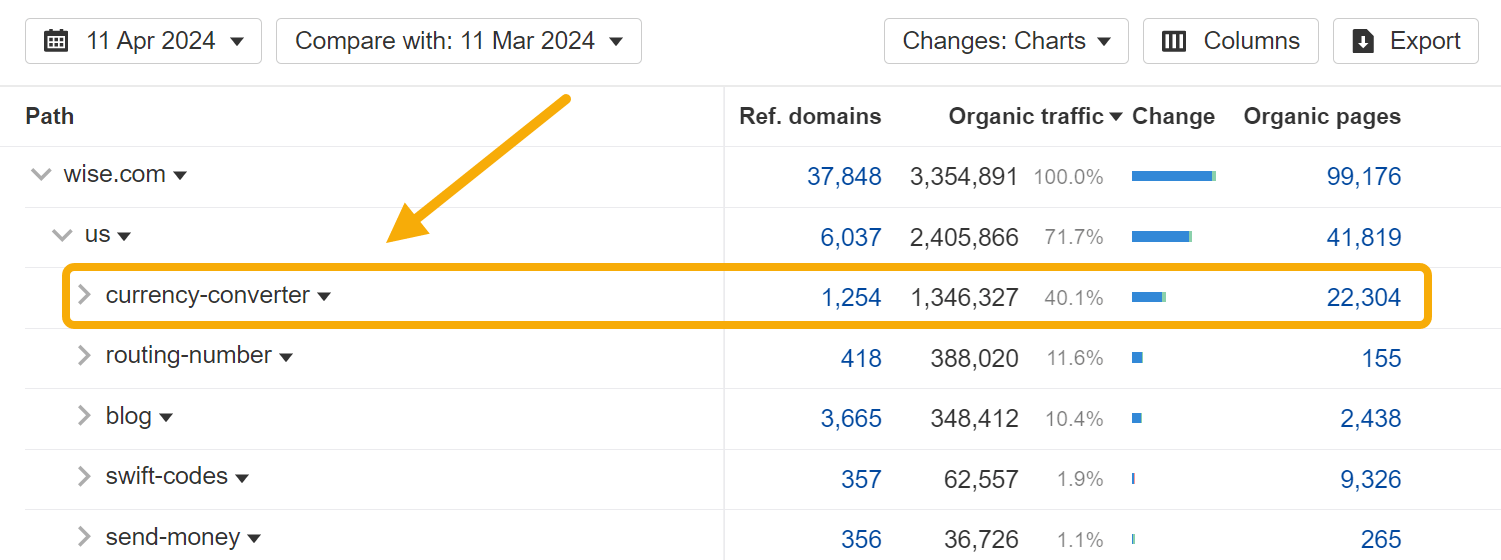
Why do we have now a listing of hottest web sites pages?

As this Twitter consumer factors out, these articles won’t ever convert…
…however they don’t want to.
Each revealed URL and focused key phrase is a brand new doorway from the backwaters of the web into your web site. It’s an opportunity to amass backlinks that wouldn’t in any other case exist, and a chance to get your model in entrance of hundreds of recent, in any other case unfamiliar folks.
These advantages may not instantly translate into income, however over time, in combination, they will have an enormous oblique impression on income. They can:
- Strengthen area authority and the search efficiency of each different web page on the web site.
- Enhance model consciousness, and encourage serendipitous interactions that land your model in entrance of the correct particular person on the proper time.
- Deny your rivals visitors and dilute their share of voice.
These small advantages turn into extra worthwhile when multiplied throughout many lots of or hundreds of pages. For those who can reduce the price of the content material, there’s comparatively little draw back.
What about topical authority?
“However what about topical authority?!” I hear you cry. “For those who stray too far out of your space of experience, gained’t rankings endure for it?”
I reply merely with this screenshot of Forbes’ “well being” subfolder, producing virtually 4 million estimated month-to-month natural pageviews:
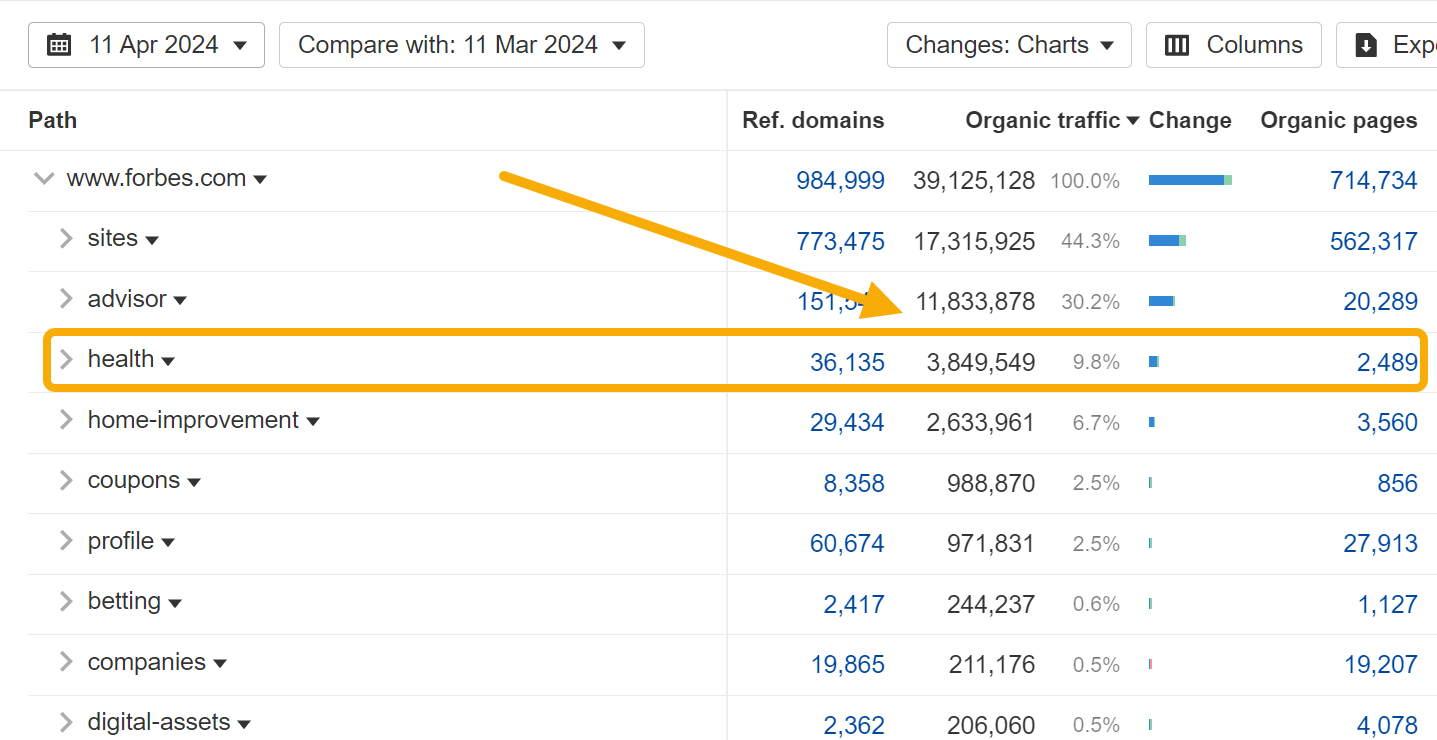
And massive firms can reduce value. For giant, established manufacturers, the marginal value of content material creation is comparatively low.
Many firms scale their output by way of networks of freelancer writers, avoiding the cost of fully loaded employees. They have established, efficient processes for research, briefing, editorial review, publication and maintenance. The cost of an additional “unit” of content—or ten, or a hundred—is not that great, especially relative to other marketing channels.
There is also relatively little opportunity cost to consider: the fact that energy spent on “vanity” traffic could be better spent elsewhere, on more business-relevant topics.
In reality, many of the companies engaging in this strategy have already plucked the low-hanging fruit and written almost every product-relevant topic. There are a finite number of high traffic, high relevance topics; blog consistently for a decade and you too will reach these limits.
On top of that, the HubSpots and Salesforces of the world have very established, very efficient sales processes. Content gating, lead capture and scoring, and retargeting allow them to put very small conversion rates to relatively good use.
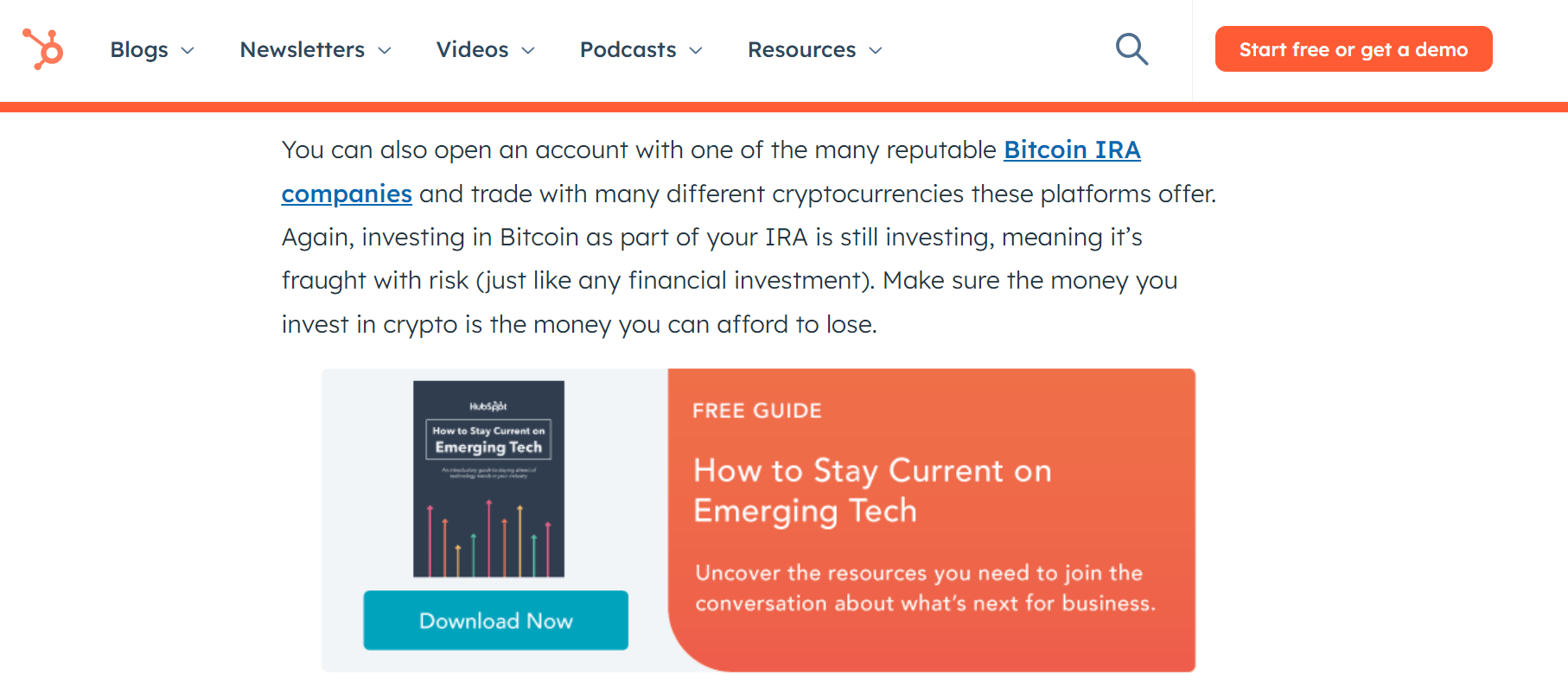
Even HubSpot’s article on Bitcoin stock has its own relevant call-to-action—and for HubSpot, building a database of aspiring investors is more valuable than it sounds, because…
The larger an organization grows, the larger its viewers must be to proceed sustaining that development charge.
Firms usually develop their complete addressable market (TAM) as they develop, like HubSpot broadening from advertising and marketing to gross sales and buyer success, launching new product traces for brand new—a lot larger—audiences. This implies the target market for his or her content material advertising and marketing grows alongside.
As Peep Laja put its:
However for the largest firms, this precept is taken to an excessive. When an organization gears as much as IPO, its target market expands to… just about everybody.
This was one thing Janessa Lantz (ex-HubSpot and dbt Labs) helped me perceive: the target market for a post-IPO firm isn’t just finish customers, however institutional traders, market analysts, journalists, even common Jane traders.
These are individuals who can affect the corporate’s value in methods past merely shopping for a subscription: they will make investments or encourage others to speculate and dramatically affect the share worth. These individuals are influenced by billboards, OOH promoting and, you guessed it, seemingly “unhealthy” content material exhibiting up every time they Google one thing.
You’ll be able to consider this as a second, extra advertising and marketing funnel for post-IPO firms:

These guests may not buy a software program subscription once they see your article within the SERP, however they’ll discover your model, and perhaps hear extra attentively the following time your inventory ticker seems on the information.
They gained’t turn into energy customers, however they may obtain your eBook and add an additional unit to the e-mail subscribers reported in your S1.
They may not contribute income now, however they’ll sooner or later: within the type of inventory appreciation, or turning into the target market for a future product line.
Self-importance visitors does create worth, however in a kind most content material entrepreneurs are usually not used to measuring.
If any of those advantages apply, then it is sensible to amass them on your firm—but additionally to disclaim them to your rivals.
web optimization is an arms race: there are a finite variety of key phrases and matters, and leaving a rival to say lots of, even hundreds of SERPs uncontested might in a short time create a headache on your firm.
web optimization can rapidly create a moat of backlinks and model consciousness that may be just about not possible to problem; left unchecked, the hole between your organization and your rival can speed up at an accelerating tempo.
Pumping out “unhealthy” content material and chasing vainness visitors is an opportunity to disclaim your rivals unchallenged share of voice, and ensure your model all the time has a seat on the desk.
Remaining ideas
Most of these articles are miscategorized—as a substitute of considering of them as unhealthy content material, it’s higher to think about them as low cost digital billboards with surprisingly nice attribution.
Large firms chasing “vainness visitors” isn’t an accident or oversight—there are good causes to speculate power into content material that may by no means convert. There may be profit, simply not within the format most content material entrepreneurs are used to.
This isn’t an argument to counsel that each firm ought to spend money on hyper-broad, high-traffic key phrases. However should you’ve been running a blog for a decade, otherwise you’re gearing up for an IPO, then “unhealthy content material” and the vainness visitors it creates may not be so unhealthy.
#Large #Firms #Unhealthy #Content material

